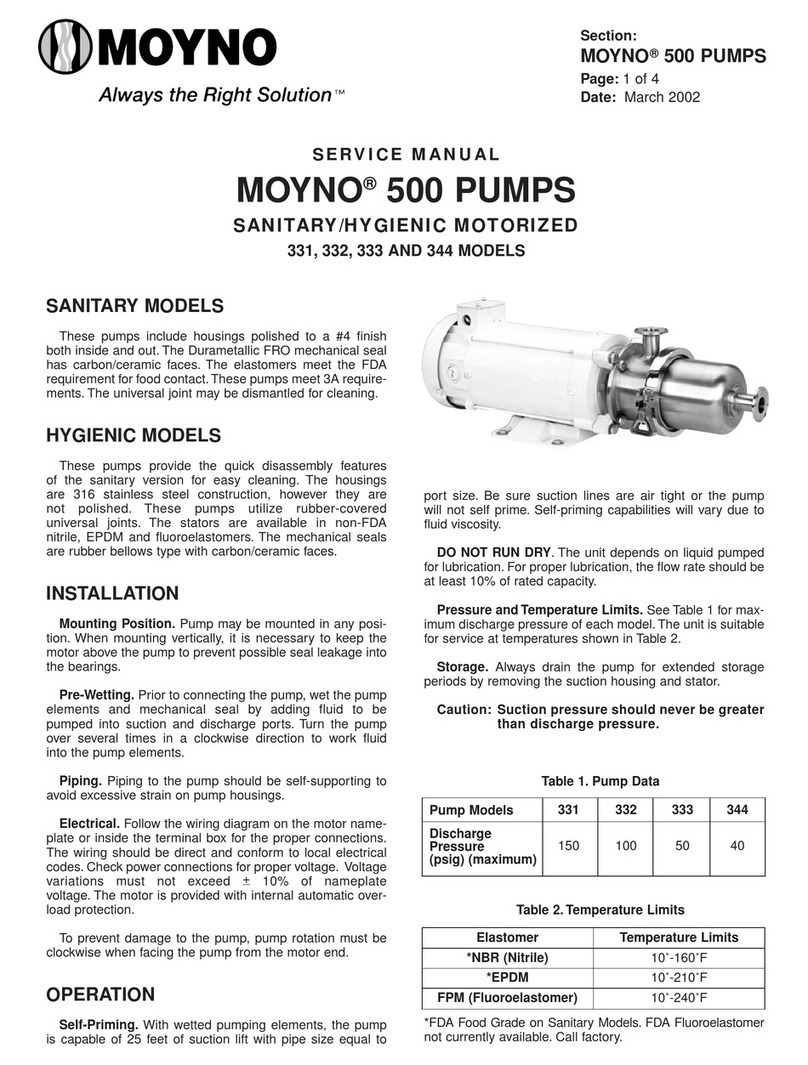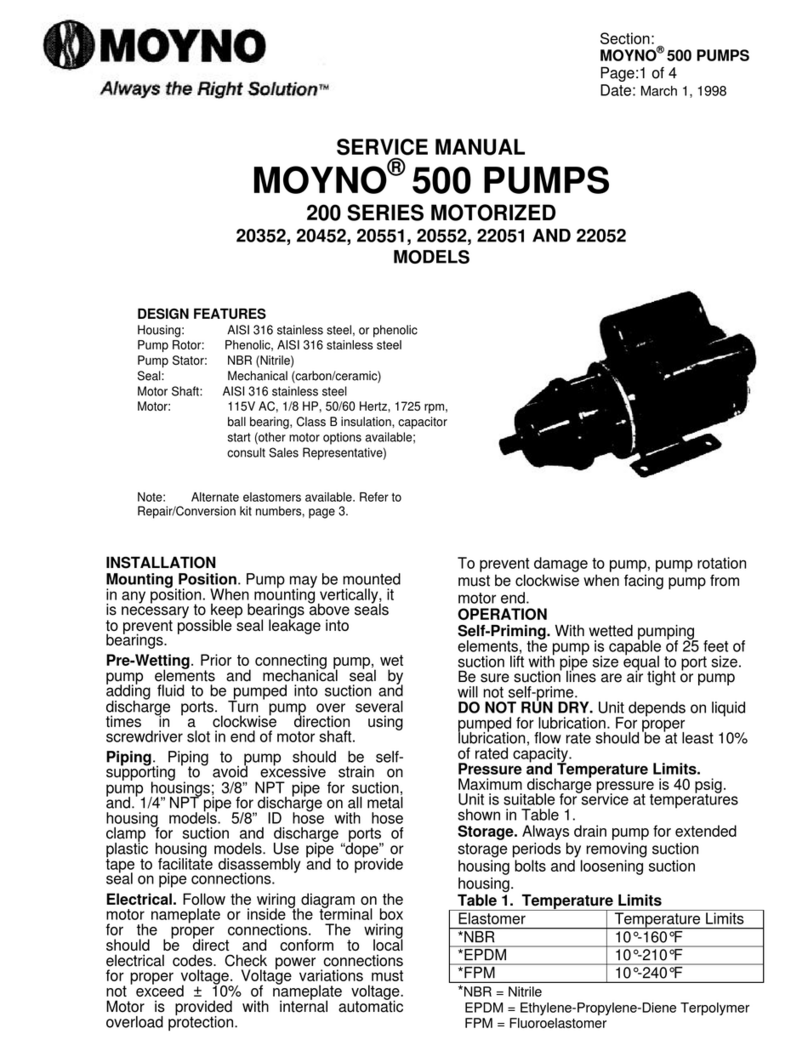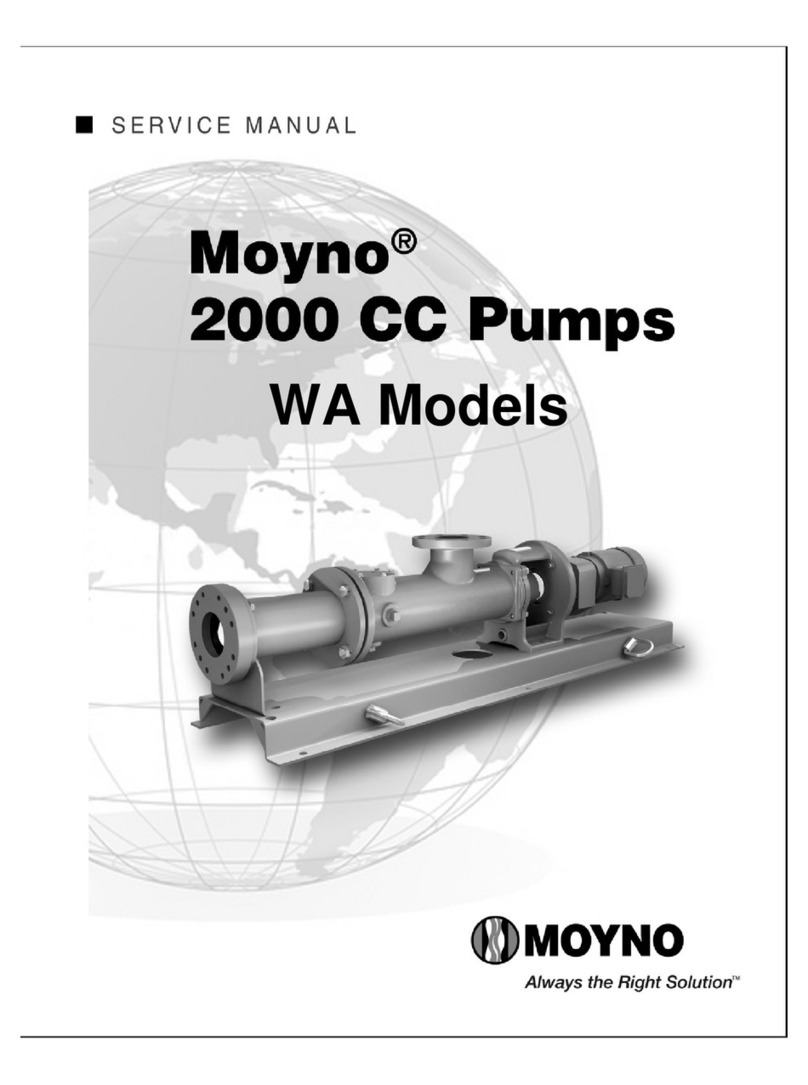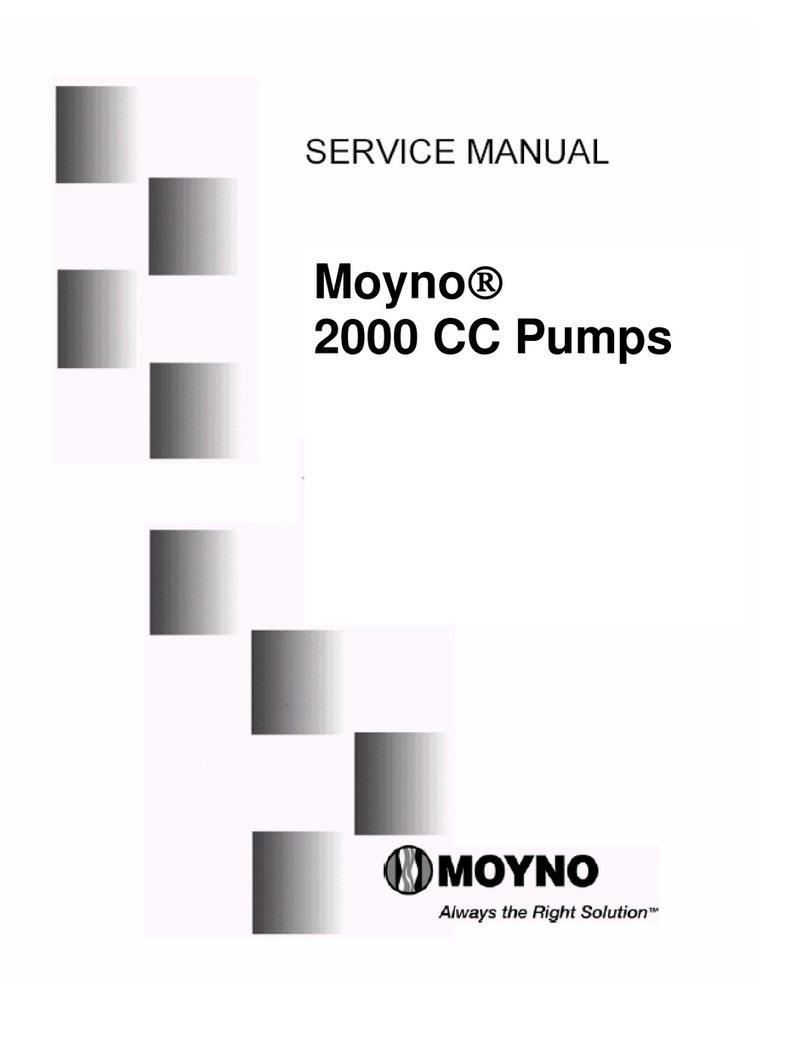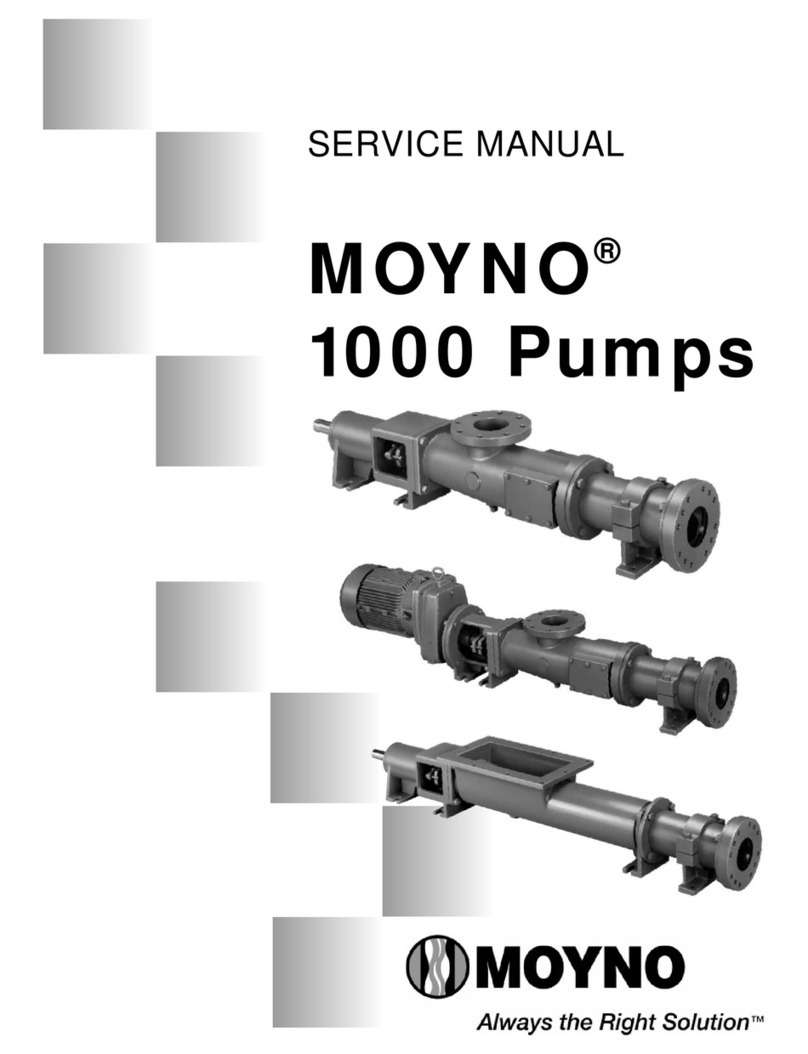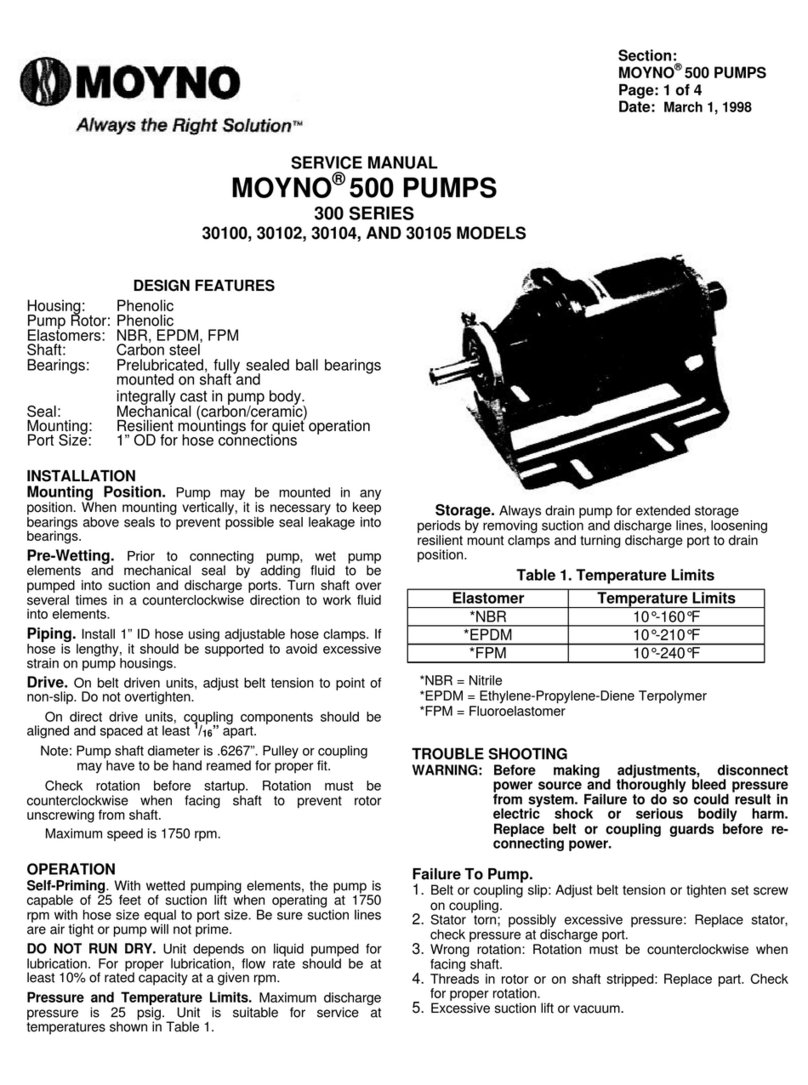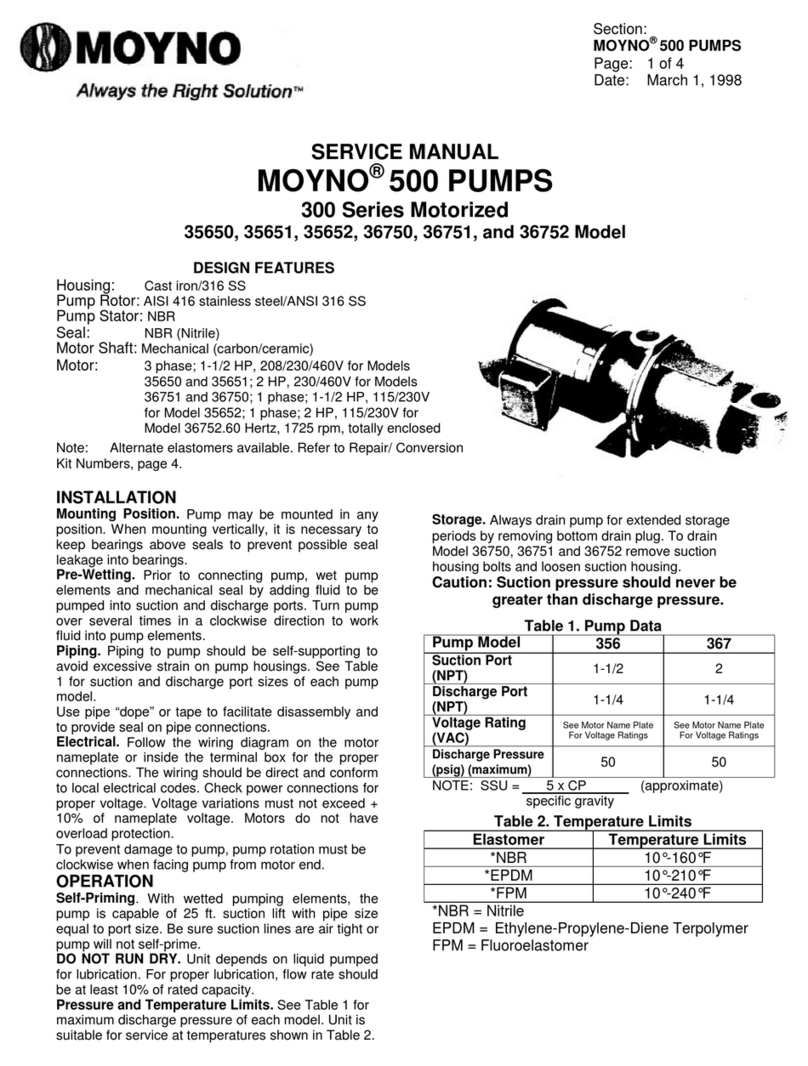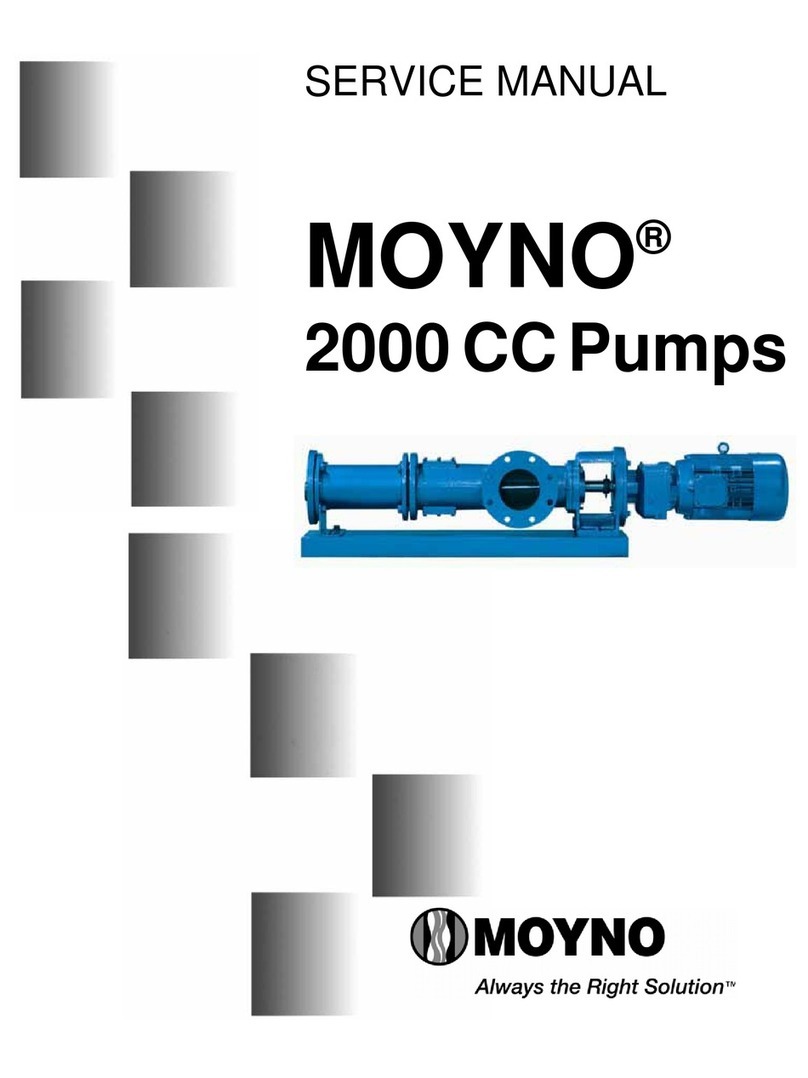
Page 2
TROUBLE SHOOTING
WARNING:Before making adjustments,
disconnect power source and
thoroughly bleed pressure
from system. Failure to do so
could result in electric shock
or serious bodily harm.
Failure To Pump.
1. Motor won’t start: Check power supply.
Voltage must be ±10% nameplate rating
when motor is in locked rotor condition.
Do not use less than #14 wire size.
2. Motor runs and thermally kicks out:
Increase ventilation to motor. Check for
defective relay, or defective capacitor.
Check for excessive pressure.
3. Stator torn; possibly excessive pressure:
Replace stator, check pressure at
discharge port.
4. Excessive suction lift or vacuum.
Pump Overloads.
1. Excessive discharge pressure: Check
discharge pressure for 40 psig maximum
or obstruction in discharge line.
2. Fluid viscosity too high: Limit fluid
viscosity to 100 CP or 500 SSU.
Noisy Operation.
1. Starved suction: Check fluid level, size of
piping. and obstructions in pipe.
2. Bearings worn: Replace parts
3. Insufficient mounting: Mount securely.
Reduce vibration induced noise by using
a short section of hose on discharge
piping.
Seal Leakage.
1. Leakage at startup: If leakage is slight,
allow pump to run several hours to let
faces run in.
2. Persistent seal leakage: Faces may be
cracked from freezing or thermal shock.
Replace seal.
Pump Will Not Prime.
1. Air leak on suction side: Check pipe
connections.
PUMP DISASSEMBLY
WARNING:Before disassembling pump,
disconnect power source and
thoroughly bleed pressure
from system. Failure to do so
could result in electric shock
or serious bodily harm.
1. Remove suction and discharge piping.
2. Remove screws (112) holding suction housing (2)
and pump body (1) to motor (70). Remove
suction housing (2) and stator (21).
3. Remove rotor (22) from shaft by turning in a
counterclockwise direction. Keep shaft from
turning by inserting screwdriver in slotted end of
motor shaft.
4. Remove slinger ring (110), pump body (1), and
mechanical seal (69).
5. If any parts of the mechanical seal (69) are worn
or broken, the complete seal assembly should be
replaced. Seal components are matched parts
and are not interchangeable.
PUMP ASSEMBLY
1. Slip slinger ring (110) over motor shaft. Place
pump body (1) in position on motor (70).
2. Install mechanical seal (69) using the following
procedure:
a. Clean and oil sealing faces using a clean light
oil (not grease).
Caution: Do not use oil on EPDM parts. Substitute
glycerin or soap and water.
b. Oil the outer surface of the seal seat, and
push the assembly into the seal bore in the
pump body (1), seating it firmly and squarely.
c. After cleaning and oiling the shaft, slide the
seal body along the shaft until it meets the
seal seat.
d. Install seal spring and spring retainer on shaft.
3. Screw rotor (22) on shaft in a clockwise direction.
Keep shaft from turning by inserting screwdriver
in slotted end of motor shaft.
4. Secure stator (21), suction housing (2), and pump
body (1) to motor (70) using screws (112).
5. Connect hose or piping and proceed as in
installation instructions.























